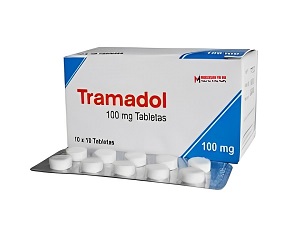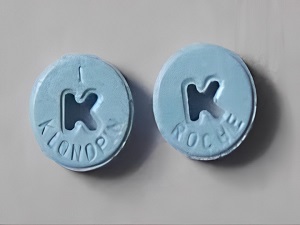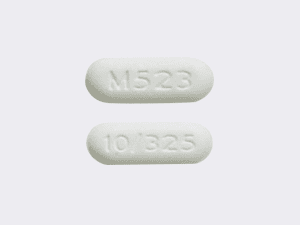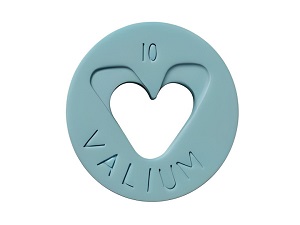Power of Tramadol Tablet For Effective Pain Relief
Are you or someone you know struggling with pain that seems to overshadow everything else in life? Pain, whether acute or chronic, can be debilitating, affecting not just physical well-being but also mental and emotional health. In the quest for relief, one name shines brightly in the realm of pain management: to buy tramadol online. Let’s embark on a journey to explore why tramadol is not just good but exceptional in its ability to provide effective pain relief treatment.
Understanding Tramadol Tablet
Tramadol tablets work wonders through a dual mechanism of action that sets them apart from traditional pain medications. Firstly, buy tramadol online that binds to mu-opioid receptors in the central nervous system, altering the perception of pain and bringing much-needed relief. But that’s not all—tramadol goes a step further by inhibiting the reuptake of serotonin and norepinephrine. This dual approach not only eases the pain but also addresses underlying factors contributing to it, making tramadol a holistic solution to various types of pain.
The Versatility of Tramadol
What makes tramadol tablets truly remarkable is their versatility in tackling a wide range of pain conditions. From postoperative discomfort to musculoskeletal pain, neuropathic agony to the challenges of cancer-related pain, tramadol emerges as a dependable ally in the battle against pain. Its ability to provide comprehensive relief makes it a go-to choice for healthcare providers looking to customize pain management strategies for their patients.
Factors affecting the tramadol tablet
Here arer the factors that affect the tramadol tablet in the following ways :-
- Medical History: Past substance abuse or addiction to opioids can influence the suitability of tramadol.
- Respiratory Health: Individuals with respiratory conditions like asthma or COPD may experience worsened breathing due to tramadol’s potential for respiratory depression.
- Pregnancy and Breastfeeding: Tramadol may pose risks to developing fetuses or nursing infants, warranting caution and medical advice.
- Medication Interactions: Taking certain medications, particularly monoamine oxidase inhibitors (MAOIs) or selective serotonin reuptake inhibitors (SSRIs), alongside tramadol can lead to serotonin syndrome.
- Health Conditions: Factors like liver or kidney disease may affect tramadol’s metabolism and clearance from the body, requiring dosage adjustments or alternative treatments.
Swift Relief, Long-lasting Results
One of the most appealing aspects of tramadol is its rapid onset of action. Within 30 to 60 minutes of ingestion, tramadol gets to work, alleviating pain and restoring comfort. This quick response time is a game-changer, especially in situations where immediate relief is crucial. But tramadol doesn’t stop there—it continues to deliver relief for several hours, typically 4 to 6 hours, ensuring sustained comfort and minimizing the need for frequent dosing. This balance of swift relief and long-lasting results makes tramadol a preferred choice for those seeking consistent pain management.
Safety First: Navigating the Concerns
When it comes to pain medications, safety is paramount. Tramadol tablets offer a safer alternative, particularly in terms of respiratory depression—a concern often associated with stronger opioids. Unlike its potent counterparts, tramadol carries a lower risk of respiratory complications, making it a safer option for patients, including the elderly or those with respiratory conditions. Additionally, tramadol’s reduced potential for dependence and abuse adds another layer of reassurance, making it suitable for long-term pain management without the same level of addiction risk.
Harmony in Combination For Pain Relief
Tramadol’s compatibility with combination therapy opens up new avenues for maximizing pain relief. It seamlessly integrates with nonsteroidal anti-inflammatory drugs (NSAIDs) or acetaminophen, amplifying its analgesic effects and reducing the need for higher doses of any single medication. This tailored approach not only enhances pain management outcomes but also allows for personalized treatment plans that cater to individual needs and preferences.
Enhancing Quality of Life
Beyond pain relief, tramadol has a transformative impact on quality of life. By effectively managing pain, tramadol empowers individuals to reclaim their lives, engage in daily activities, and experience less discomfort. The freedom from pain-associated limitations fosters a sense of well-being, promoting physical, mental, and emotional health. It’s not just about easing pain; it’s about restoring joy, vitality, and a sense of normalcy.
Accessible, Reliable, and Supported
Tramadol’s widespread availability in tablet form ensures accessibility for patients across various healthcare settings. Whether prescribed in hospitals, clinics, or pharmacies, tramadol remains a readily accessible option for those in need of reliable pain relief. Moreover, buy tramadol online that has an efficacy for a backed by extensive research and evidence-based practice. Clinical studies affirm its effectiveness in managing diverse pain conditions, solidifying its status as a trusted and validated choice in pain management protocols.
Pioneering the Future of Pain Relief
The journey with tramadol doesn’t end here—it’s a path of continual innovation and advancement. Ongoing research aims to refine tramadol’s efficacy, safety profile, and therapeutic applications, ensuring that it remains at the forefront of pain management. This commitment to advancement reflects a dedication to meeting the evolving needs of patients and healthcare providers, paving the way for a brighter future in pain relief treatment.
Who can avoid tramadol tablet ?
Here tramadol tablet is good for pain relief treatment are mentioned below:-
- Individuals with a history of substance abuse or opioid addiction should avoid tramadol due to its potential for dependence and abuse.
- Patients with respiratory conditions, such as asthma or chronic obstructive pulmonary disease (COPD), should steer clear of tramadol as it can cause respiratory depression.
- Pregnant women and breastfeeding mothers should consult their healthcare provider before taking tramadol, as it may pose risks to the developing fetus or nursing infant.
- Those taking certain medications, such as monoamine oxidase inhibitors (MAOIs) or selective serotonin reuptake inhibitors (SSRIs), should avoid tramadol due to the risk of serotonin syndrome.
- Always consult with a healthcare professional to determine if tramadol is appropriate for your specific medical condition and situation.
Embracing Hope, Embodying Relief
In the realm of pain Relief, buy tramadol online that emerge as a beacon of hope, embodying the promise of relief and restoration. It’s not just about managing pain; it’s about empowering individuals to live their lives to the fullest, free from the shackles of pain. If pain has been holding you back, consider the transformative potential of tramadol—an ally in your journey towards a pain-free, fulfilling life.








